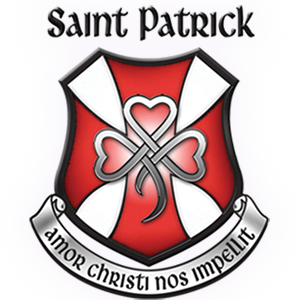
Academics
Special Education
Have questions about special education at St. Patrick Catholic Secondary School? Find answers to the follow questions:
How do Individual Education Plans (IEPs) work in high school?
IEPs in elementary school transfer over to high school. The main difference is that the IEP is based on accommodations and not modifications.
Accommodations can include how the curriculum is delivered or the manner in which students demonstrate their learning. Modifications of expectations alter the Ministry of Education curriculum expectations and usually result in the student not working towards earning credit for the course.
How do students receive supports through special education?
Classroom teachers have access to the IEPs for each student in their class. Teachers will put accommodations appropriate to the individual student needs in place.
What is the learning strategies course (GLE) and why should my child take it?
The Learning Strategies Course provides the student with a focused opportunity to develop additional literacy skills, self-advocacy skills, and executive functioning (organization and time management) skills. This course will be a substitution for the Grade Nine French credit for the requirements of the Grade 12 OSSD (Diploma).
Will my child be withdrawn from classes each day?
Students will be in subject classes on a daily basis unless they require support as requested and required. This support will be on an individual basis in a quiet setting to complete classwork (assignments / tests / seatwork / projects / exams, etc.)
If my child has a sea computer how does it work in high school?
The SEA computer is transferred from the elementary school to high school in early September of Grade 9. This laptop will be housed in the resource room to ensure its safety and that it is always charged. Students will be sent down by the classroom teacher to sign out each period and return them after use per subject.
How do I choose the most appropriate programming for my child for grade nine (level of study)?
An Exchange of Information is done with every Grade 8 teacher and the Special Education Department Head and Guidance to discuss the most recent level of achievement within the Grade 8 classroom, test data, EQAO scores, etc.
A determination is then made based on this data to ensure a smooth transition into Grade Nine. This is done to maximize the chance of success in Grade Nine courses. Progress is reviewed on a very regular basis to determine the next steps and if any change of programming is required to work towards future goals.
What kind of accommodations/supports are there at St. Patrick?
The most important accommodations for success in high school include extra time for assignments/tests/exams; chunking of instruction/ deadlines/assignments; repetition of instructions; regular check-ins to monitor progress; editing/feedback support; prompts to refocus student’s attention; alternative setting for tests/exams.
In addition, there are many other accommodations that may be recommended on an individual basis on the IEP.
My child does not want to be “different” from peers. How does St. Patrick maximize confidentiality?
Most classroom teachers use common accommodations in their daily teaching so as not to center out any student with an IEP. We consider this the regular practice of the great teachers in our school community.
What happens if my child and/or I do not feel an IEP is no longer needed?
An IEP provides students with accommodations that MAY be used if NEEDED. As students progress through the grades and educational demands increase, an IEP can provide supports not needed previously. In essence, it is insurance to provide support in the event it is needed. If it is not needed at the time, it does not need to be accessed.
What happens to the IEP for post-secondary?
IEPs do not transfer automatically to post-secondary. This is confidential information that ONLY the student can share with the institution. It does not show up on any transcripts or records, Students going to post-secondary may need some of these supports to continue. They will need to independently contact the Student Services Office at post-secondary and communicate with the staff there in regards to needs/accommodations.
If my child is currently in an ISP (special needs) classroom what does it look like in high school?
ISP classrooms at St. Patrick are small, carefully structured classes. The main focus is to develop and maximize future independence: communication skills, life skills, social skills, and functional numeracy and literacy skills.
Educational Assistants and Child and Youth Workers provide extra supports to help students work towards the development of these skills.
